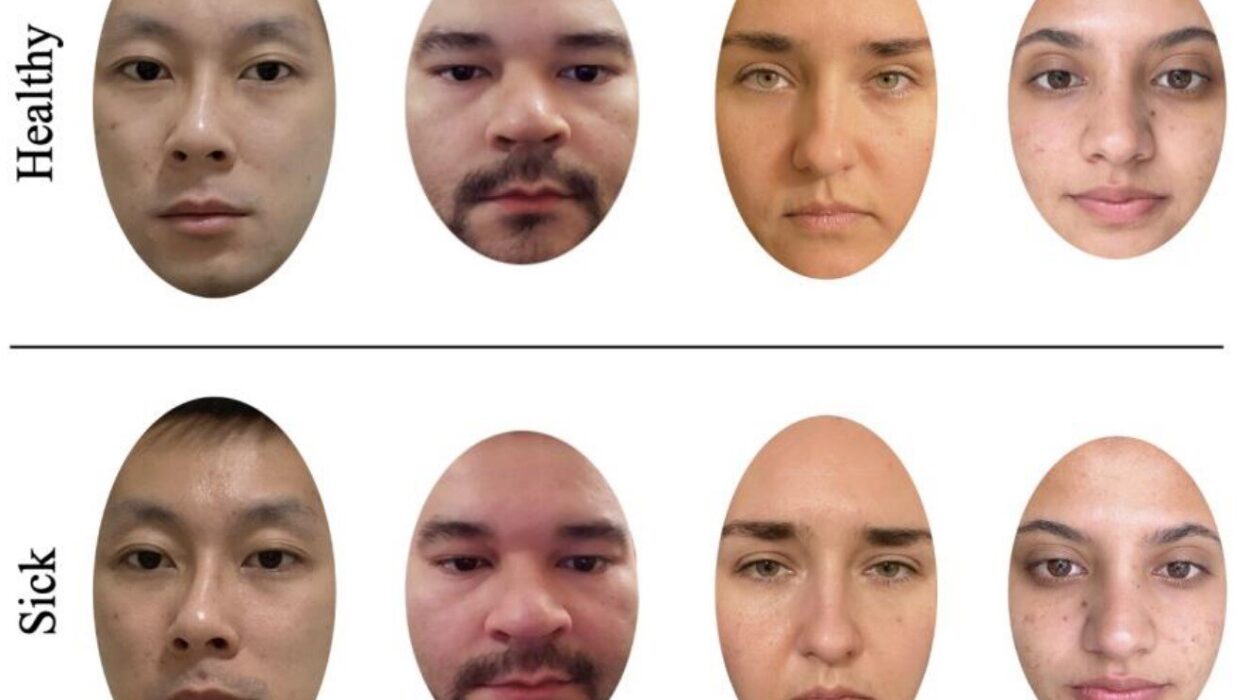Mindfulness has become one of the most talked-about topics in modern psychology, neuroscience, and wellness. It is often described as a simple yet profound practice that can help people cope with stress, anxiety, depression, and the challenges of daily life. But mindfulness is more than a passing trend—it is an ancient mental discipline that modern science has shown to profoundly affect the brain, body, and overall well-being.
Mindfulness involves cultivating awareness of the present moment, intentionally and without judgment. It teaches individuals to observe thoughts, emotions, and sensations as they arise, rather than reacting automatically or getting lost in them. This awareness allows people to respond to life’s situations with clarity and compassion instead of being overwhelmed by them.
Over the past several decades, scientific studies have demonstrated that mindfulness can improve mental health, enhance emotional regulation, and even reshape neural pathways in the brain. Understanding how mindfulness works—and how to use it effectively—can open the door to a calmer, more resilient, and more meaningful life.
The Science Behind Mindfulness
The roots of mindfulness go back more than 2,500 years, originating in ancient Buddhist meditation practices. However, in recent decades, it has been reinterpreted through the lens of psychology and neuroscience, leading to evidence-based approaches such as Mindfulness-Based Stress Reduction (MBSR) and Mindfulness-Based Cognitive Therapy (MBCT).
Scientific research has revealed that mindfulness changes the structure and function of the brain. Neuroimaging studies show that consistent mindfulness practice strengthens the prefrontal cortex—the part of the brain responsible for attention, planning, and decision-making—while reducing activity in the amygdala, the region involved in fear and stress responses. These neurological changes correlate with improved emotional stability, reduced anxiety, and better cognitive control.
Furthermore, mindfulness enhances the connectivity between brain regions that regulate emotions and self-awareness, particularly the anterior cingulate cortex and the insula. This improved communication allows individuals to recognize emotional triggers early and manage them more skillfully. Over time, this fosters a more balanced and adaptive mental state.
Physiologically, mindfulness has been shown to lower blood pressure, reduce the secretion of stress hormones like cortisol, and strengthen immune function. These effects demonstrate that mindfulness not only improves psychological well-being but also has measurable benefits for physical health.
The Relationship Between Mindfulness and Mental Health
Mental health is deeply influenced by how individuals think, feel, and react to their experiences. Anxiety, depression, and chronic stress often arise from patterns of rumination—repetitively thinking about the past—or worrying excessively about the future. Mindfulness interrupts these cycles by anchoring attention to the present moment.
When practiced regularly, mindfulness helps people become aware of their habitual thought patterns and emotional reactions. This awareness creates space for conscious choice rather than automatic reactivity. Instead of being consumed by negative thoughts or feelings, one learns to observe them as temporary mental events that come and go.
For example, in anxiety, the mind often becomes entangled in future-oriented fears—“What if this goes wrong?” Mindfulness teaches the individual to notice these thoughts without judgment, to label them as “thinking,” and to gently bring attention back to the here and now. This process weakens the mind’s identification with anxious thoughts and reduces their power.
In depression, mindfulness helps individuals step out of negative rumination cycles that perpetuate low mood. By observing thoughts such as “I’m not good enough” as passing mental phenomena rather than truths, people develop psychological distance and self-compassion. This shift in perspective reduces self-criticism and helps restore emotional balance.
Mindfulness in Everyday Life
Mindfulness is not confined to meditation sessions; it can be integrated into any aspect of daily life. The essence of mindfulness is paying attention with full presence to whatever you are doing, whether eating, walking, listening, or working.
Practicing mindfulness while eating, for instance, involves slowing down, noticing the taste, texture, and aroma of food, and being aware of the body’s sensations of hunger and fullness. This not only enhances enjoyment but also promotes healthy eating behaviors and reduces emotional eating.
Similarly, mindful walking encourages awareness of each step, the feeling of the ground beneath the feet, and the rhythm of the breath. This practice can transform a simple act of movement into a meditative experience that grounds the mind in the present moment.
In communication, mindfulness can foster deeper listening and empathy. By paying attention to others without planning a response or judgment, relationships become more authentic and understanding improves.
The goal is not to eliminate thoughts or emotions but to cultivate a relationship with them characterized by curiosity and acceptance. Through consistent practice, mindfulness becomes a way of being rather than just a technique.
How Mindfulness Reduces Stress
Stress arises when perceived demands exceed one’s perceived ability to cope. While stress itself is not inherently negative—it can motivate action in short bursts—chronic stress damages both mental and physical health. Mindfulness helps by changing the way we relate to stress rather than trying to eliminate it entirely.
When faced with a stressful situation, the body activates the “fight-or-flight” response, releasing hormones such as cortisol and adrenaline. These prepare the body for immediate action but also cause tension, racing thoughts, and physiological strain. Mindfulness interrupts this automatic response by bringing awareness to the body and breath.
By noticing the sensations of tension or the racing of the mind, and by focusing attention on slow, deliberate breathing, mindfulness activates the parasympathetic nervous system—the body’s natural relaxation response. This shift reduces heart rate, lowers blood pressure, and calms the mind.
Moreover, mindfulness encourages acceptance of stressful experiences instead of resistance. When one accepts what is happening in the present moment, even if unpleasant, mental energy is conserved, and suffering is reduced. Over time, mindfulness enhances resilience—the ability to recover from adversity and adapt to challenges.
Mindfulness and Emotional Regulation
Emotions are integral to human life, but difficulties arise when they become overwhelming or mismanaged. Mindfulness helps individuals regulate emotions by cultivating awareness and equanimity.
Instead of suppressing, avoiding, or acting impulsively on emotions, mindfulness invites observation. When anger, sadness, or fear arises, the practice is to notice the emotion’s physical sensations, thoughts, and impulses without reacting immediately. This observation activates the prefrontal cortex, which moderates emotional responses, allowing more deliberate and adaptive actions.
For example, if someone feels anger building during an argument, mindfulness helps recognize the emotion early—perhaps through sensations of heat or tightness in the chest. A moment of awareness creates a pause before reacting, enabling a response that is more thoughtful and less destructive.
Neuroscientific studies have shown that mindfulness training reduces the reactivity of the amygdala and increases activity in the regions of the brain associated with empathy and compassion. As emotional balance improves, relationships become more harmonious, and inner peace becomes more stable.
Mindfulness and Anxiety
Anxiety often involves excessive focus on imagined future threats. The mind becomes entangled in scenarios that may never happen, triggering physiological arousal and distress. Mindfulness counters anxiety by anchoring attention in the present and breaking the habit of catastrophizing.
Through regular practice, individuals learn to observe anxious thoughts without engaging with them. Instead of being caught in the “what if” cycle, one learns to identify these thoughts as mental events, label them, and let them pass. Breathing exercises and body awareness further calm the nervous system, reducing anxiety symptoms.
Clinical studies have demonstrated the effectiveness of mindfulness-based interventions in reducing generalized anxiety disorder, social anxiety, and panic symptoms. By training the mind to stay present, mindfulness diminishes the intensity of anxious rumination and promotes a sense of calm control.
Mindfulness and Depression
Depression often involves repetitive negative thinking and emotional withdrawal. People caught in depressive cycles tend to ruminate about failures, losses, or perceived inadequacies. Mindfulness helps interrupt these cycles by encouraging nonjudgmental awareness.
Mindfulness-Based Cognitive Therapy (MBCT), developed by psychologists Zindel Segal, Mark Williams, and John Teasdale, combines traditional cognitive therapy with mindfulness meditation. MBCT has been shown in clinical trials to significantly reduce relapse rates in individuals with recurrent depression.
The key lies in recognizing depressive thoughts as passing mental events rather than reflections of reality. Instead of trying to push away sadness or hopelessness, mindfulness teaches acceptance—observing emotions as they are without adding self-criticism or resistance. This compassionate stance fosters self-acceptance and prevents emotional spirals.
Mindfulness and Trauma
Trauma can leave deep emotional and physiological imprints. Survivors often experience intrusive memories, hypervigilance, and emotional numbing. Mindfulness, when practiced gently and with professional guidance, can help re-establish a sense of safety and control.
Trauma-sensitive mindfulness focuses on grounding techniques—feeling the feet on the floor, noticing the breath, or becoming aware of sounds in the environment—to anchor the mind in the present. This helps individuals differentiate between past trauma and current reality.
Over time, mindfulness fosters a compassionate relationship with one’s body and emotions, allowing gradual healing. However, it is important that trauma survivors practice mindfulness under supervision or within structured therapeutic settings to avoid reactivation of painful memories.
Mindfulness and Compassion
Mindfulness naturally cultivates compassion. By observing one’s own suffering with kindness and without judgment, individuals develop empathy toward others. This compassionate awareness reduces isolation and increases feelings of connection and belonging.
Practices such as loving-kindness meditation (metta) extend mindfulness beyond self-awareness to include the wish for the well-being of all beings. Scientific studies have shown that compassion-based mindfulness increases activity in brain regions related to empathy and positive emotion, while decreasing activation in networks associated with self-centered thinking.
Compassion also serves as a buffer against burnout, particularly in caregiving professions. It helps individuals maintain emotional resilience while staying connected to others’ experiences without being overwhelmed.
How to Cultivate Mindfulness
Developing mindfulness requires consistency and patience. The most common method is through meditation, where one sits quietly, focuses on the breath or body sensations, and observes thoughts and emotions as they arise. When the mind wanders, attention is gently brought back to the present.
Formal mindfulness meditation can be practiced for as little as ten minutes a day, gradually increasing with experience. Over time, this discipline enhances awareness throughout daily activities. Informal mindfulness can be practiced during any routine task—washing dishes, brushing teeth, or walking—by paying full attention to the experience.
The key is nonjudgmental awareness. Instead of striving for a particular outcome, mindfulness involves noticing whatever is present—whether calm or restless, pleasant or unpleasant—and allowing it to be. Through this acceptance, the mind becomes more balanced and less reactive.
The Role of Breath in Mindfulness
Breath awareness is the foundation of mindfulness practice. The breath is always available, constantly changing, and intimately connected to the state of mind. When anxious, the breath becomes shallow and rapid; when calm, it becomes deep and steady.
By focusing attention on the natural rhythm of breathing, mindfulness stabilizes the mind and soothes the nervous system. Slow, conscious breathing activates the parasympathetic system, promoting relaxation. It also serves as an anchor, helping practitioners return to the present whenever the mind drifts.
Scientific studies show that mindful breathing reduces heart rate variability, enhances oxygen flow, and balances activity between brain hemispheres. It provides a simple yet powerful method to regulate mood and concentration.
Mindfulness and the Brain
Neuroscientific research has provided compelling evidence of mindfulness’s impact on brain structure and function. Long-term mindfulness practitioners show increased gray matter density in regions associated with attention, emotional regulation, and empathy, such as the prefrontal cortex and hippocampus.
Mindfulness decreases activity in the default mode network, the part of the brain responsible for mind-wandering and self-referential thought. Reduced activity in this network corresponds to less rumination and greater focus.
Moreover, mindfulness increases the production of neurotransmitters such as serotonin and dopamine, which are associated with mood stability and well-being. These neurochemical changes help explain the long-term benefits of mindfulness for mental health.
Mindfulness in Clinical Psychology
Mindfulness has become a cornerstone of modern psychotherapy. Mindfulness-Based Stress Reduction (MBSR), developed by Jon Kabat-Zinn in the late 1970s, introduced mindfulness into medical settings to help patients cope with chronic pain and illness. It has since been adapted for a wide range of psychological conditions.
Mindfulness-Based Cognitive Therapy (MBCT) is specifically designed to prevent depressive relapse. Dialectical Behavior Therapy (DBT) and Acceptance and Commitment Therapy (ACT) also integrate mindfulness principles to enhance emotional regulation and psychological flexibility.
These therapies are supported by extensive empirical evidence. Meta-analyses confirm that mindfulness-based interventions reduce symptoms of anxiety, depression, and stress across diverse populations.
Mindfulness and Neuroplasticity
One of the most remarkable findings in neuroscience is that mindfulness changes the brain through neuroplasticity—the brain’s ability to reorganize itself by forming new neural connections. Regular mindfulness practice enhances neural pathways associated with attention, empathy, and self-regulation, while weakening those linked to stress and fear.
This means that through consistent mindfulness, individuals can literally reshape their brains toward healthier functioning. Such plasticity demonstrates that the mind is not fixed but dynamic, capable of healing and growth throughout life.
Integrating Mindfulness into Modern Life
In the fast-paced, technology-driven world, the human mind is constantly bombarded by information. Mindfulness offers an antidote to distraction and overload by restoring presence and focus.
Practicing mindfulness does not require renouncing modern life. It can coexist with work, relationships, and responsibilities. Short moments of mindful awareness—pausing before sending an email, taking a deep breath before responding in conversation, or noticing sensations while walking—can profoundly shift one’s experience.
Mindfulness in the workplace has been shown to improve concentration, reduce burnout, and enhance creativity. In education, mindfulness helps students manage stress and improve academic performance. In healthcare, it supports both patient recovery and caregiver resilience.
The Role of Self-Compassion in Mindfulness
Self-compassion is an essential aspect of mindfulness. Many people struggle with harsh self-criticism, which contributes to depression and anxiety. Mindfulness teaches kindness toward oneself—the ability to acknowledge pain without judgment and to respond with understanding rather than punishment.
Psychologist Kristin Neff’s research on self-compassion reveals that it correlates strongly with well-being, resilience, and life satisfaction. Mindfulness provides the foundation for self-compassion by creating awareness of suffering and the space to meet it with care.
Practicing self-compassion does not mean indulgence or avoidance of responsibility. Rather, it involves treating oneself as one would treat a dear friend—with empathy and respect. This attitude enhances emotional healing and mental strength.
Challenges in Practicing Mindfulness
While mindfulness is simple in principle, it is not always easy in practice. Common challenges include restlessness, impatience, sleepiness, and self-judgment. The mind naturally wanders, and expecting perfect focus often leads to frustration.
The key is persistence and gentleness. Every time attention drifts and is brought back, mindfulness grows stronger—just as muscles strengthen through repeated exercise. Over time, practitioners learn to observe even distraction with mindfulness, transforming obstacles into opportunities for awareness.
Another challenge is misunderstanding mindfulness as a quick fix or a way to suppress emotions. True mindfulness is not about escaping discomfort but meeting it with open awareness. It requires courage, patience, and humility.
The Long-Term Benefits of Mindfulness
Long-term mindfulness practice has profound cumulative effects. Studies of experienced meditators reveal greater psychological well-being, improved concentration, and enhanced empathy. Mindfulness increases tolerance for uncertainty and promotes acceptance of life’s impermanence.
Physiologically, mindfulness lowers chronic inflammation, enhances immune response, and slows biological aging through effects on cellular markers such as telomeres. Mentally, it reduces the risk of relapse in depression, prevents burnout, and improves cognitive flexibility.
Perhaps most importantly, mindfulness fosters a deep sense of inner peace—a feeling of being fully alive and at ease within oneself. It nurtures gratitude, compassion, and a connection to life beyond personal concerns.
Mindfulness as a Way of Living
Ultimately, mindfulness is not a technique but a way of being. It transforms the way individuals perceive and relate to their experiences. When practiced with sincerity, it brings freedom from habitual reactivity and opens a direct path to clarity and wisdom.
Living mindfully means being aware of life as it unfolds—moment by moment—with curiosity and acceptance. It involves appreciating small joys, acknowledging pain without avoidance, and acting with compassion and integrity.
In this way, mindfulness becomes a lifelong practice that enriches every aspect of existence. It bridges science and spirituality, mind and body, self and world.
Conclusion
Mindfulness is both ancient and modern—a practice that unites the wisdom of contemplative traditions with the rigor of scientific evidence. Its benefits for mental health are now firmly established: reduced stress, greater emotional regulation, decreased anxiety and depression, and enhanced overall well-being.
Using mindfulness for better mental health does not require mastery of meditation or retreat from society. It begins with simple awareness—of breath, of thought, of life unfolding in each moment. With patience and persistence, mindfulness becomes a steady companion, guiding the mind toward calmness, resilience, and compassion.
In a world often driven by haste and distraction, mindfulness invites us to pause, breathe, and return home to the present—the only moment where life truly happens. Through mindfulness, we rediscover balance, healing, and the deep peace that has always been within us.






